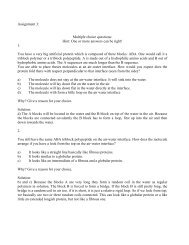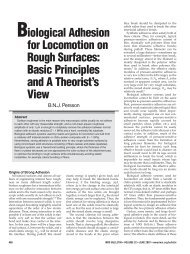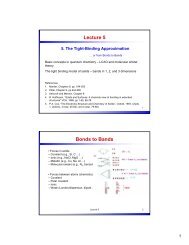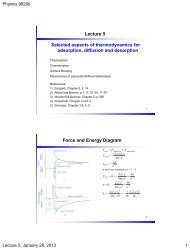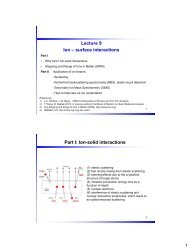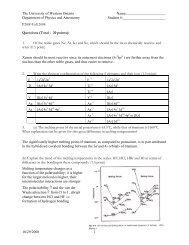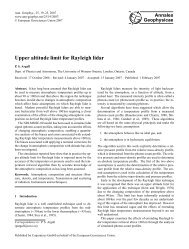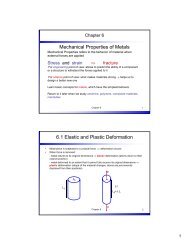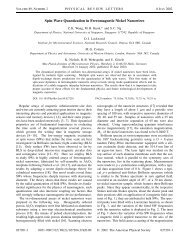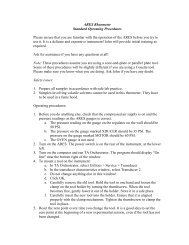P259E Laboratory Manual
P259E Laboratory Manual
P259E Laboratory Manual
You also want an ePaper? Increase the reach of your titles
YUMPU automatically turns print PDFs into web optimized ePapers that Google loves.
Square and Rectangular WavesThe square wave is another common wave shape. Basically, a square wave is a voltage thatturns on and off (or goes high and low) at regular intervals. Television, radio, and computercircuitry often use square waves for timing signals. The rectangular wave is like the squarewave except that the high and low time intervals are not of equal length.Figure 2. Square and Rectangular WavesSawtooth and Triangle WavesSawtooth and Triangle waves result from circuits designed to control voltages linearly, suchas the horizontal sweep of an analog oscilloscope or the raster scan of a television. Thetransitions between voltage levels of these waves change at a constant rate. These transitionsare called ramps.Figure 3. Sawtooth and Rectangular WavesStep and Pulse ShapeSignals such as steps and pulses that only occur once are called single-shot or transientsignals. The step indicates a sudden change in voltage, similar to what you would see if youturned on a power switch. The pulse indicates what you would see if you turned a powerswitch on and then off again. A collection of pulses traveling together creates a pulse train.Digital components in a computer communicate with each other using pulses. Pulses are alsocommon in x-ray, radar and communications equipment.Figure 4. Step, Pulse, and Pulse Train Shapes2




